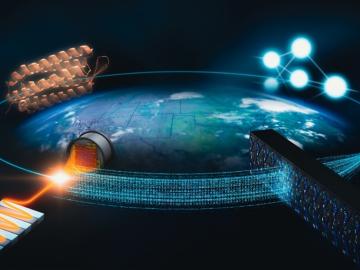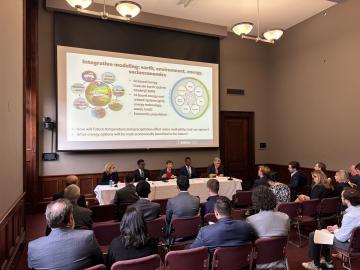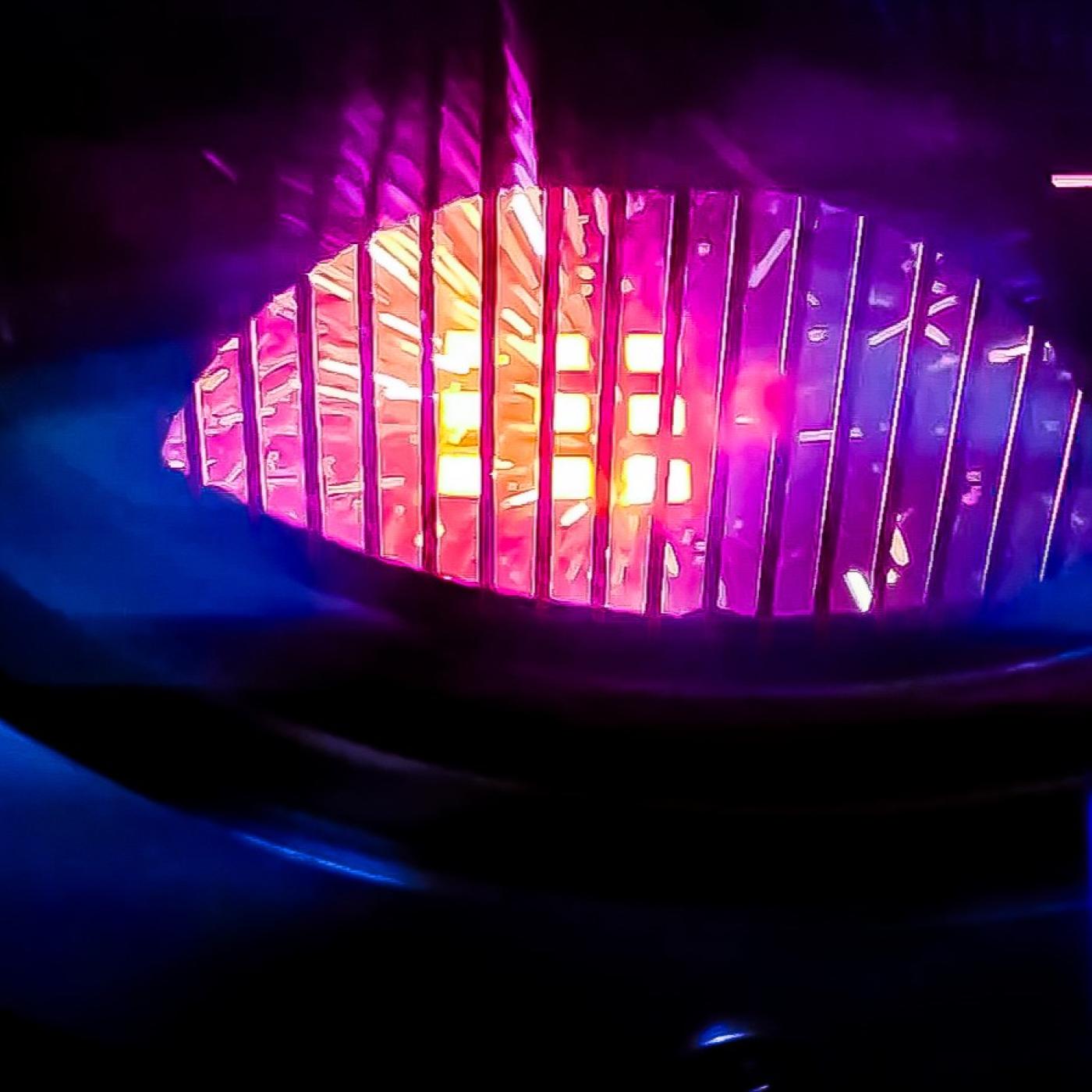
Filter News
Area of Research
News Type
News Topics
- (-) Advanced Reactors (8)
- (-) Artificial Intelligence (54)
- (-) Clean Water (15)
- (-) Cybersecurity (14)
- (-) Grid (26)
- (-) Isotopes (31)
- (-) Security (12)
- (-) Transportation (27)
- 3-D Printing/Advanced Manufacturing (45)
- Big Data (32)
- Bioenergy (52)
- Biology (62)
- Biomedical (33)
- Biotechnology (13)
- Buildings (23)
- Chemical Sciences (28)
- Climate Change (54)
- Composites (9)
- Computer Science (91)
- Coronavirus (17)
- Critical Materials (5)
- Decarbonization (48)
- Education (2)
- Emergency (2)
- Energy Storage (30)
- Environment (107)
- Exascale Computing (34)
- Fossil Energy (4)
- Frontier (29)
- Fusion (31)
- High-Performance Computing (52)
- Hydropower (5)
- ITER (2)
- Machine Learning (26)
- Materials (46)
- Materials Science (50)
- Mathematics (7)
- Mercury (7)
- Microelectronics (3)
- Microscopy (20)
- Molten Salt (1)
- Nanotechnology (16)
- National Security (48)
- Net Zero (8)
- Neutron Science (55)
- Nuclear Energy (56)
- Partnerships (23)
- Physics (32)
- Polymers (8)
- Quantum Computing (23)
- Quantum Science (34)
- Renewable Energy (1)
- Simulation (35)
- Software (1)
- Space Exploration (12)
- Statistics (2)
- Summit (34)
- Sustainable Energy (49)
- Transformational Challenge Reactor (3)
Media Contacts

To bridge the gap between experimental facilities and supercomputers, experts from SLAC National Accelerator Laboratory are teaming up with other DOE national laboratories to build a new data streaming pipeline. The pipeline will allow researchers to send their data to the nation’s leading computing centers for analysis in real time even as their experiments are taking place.

Prasanna Balprakash, director of AI programs for ORNL, discussed advancing climate and weather research through high performance computing and artificial intelligence as part of a September 18 panel for the United States Senate.

The Smoky Mountain Computational Sciences and Engineering Conference, or SMC24, entered its third decade with the 21st annual gathering in East Tennessee.
After retiring from Y-12, Scott Abston joined the Isotope Science and Engineering Directorate to support isotope production and work with his former manager. He now leads a team maintaining critical equipment for medical and space applications. Abston finds fulfillment in mentoring his team and is pleased with his decision to continue working.

As a mechanical engineer in building envelope materials research at ORNL, Bryan Maldonado sees opportunities to apply his scientific expertise virtually everywhere he goes, from coast to coast. As an expert in understanding how complex systems operate, he’s using machine learning methods to control the process and ultimately optimize performance.

A research scientist with the Department of Energy’s Oak Ridge National Laboratory, Ayana Ghosh was named the 2024 Early Discovery Award winner by the American Ceramic Society. The award recognizes an early career member of the organization who has contributed to basic science in the field of glass and ceramics.

Nuclear physicists at the Department of Energy’s Oak Ridge National Laboratory recently used Frontier, the world’s most powerful supercomputer, to calculate the magnetic properties of calcium-48’s atomic nucleus.
Researchers at ORNL recently demonstrated an automated drone-inspection technology at EPB of Chattanooga that will allow utilities to more quickly and easily check remote power lines for malfunctions, catching problems before outages occur.

Jeremiah Sewell leads a team at ORNL, working on xenon-129 production for lung imaging. Reflecting on his career, Sewell views each opportunity as a "door" he steps through, leveraging over 25 years of experience in nuclear power and centrifuge operations to advance the facility’s mission.

Debjani Singh, a senior scientist at ORNL, leads the HydroSource project, which enhances hydropower research by making water data more accessible and useful. With a background in water resources, data science, and earth science, Singh applies innovative tools like AI to advance research. Her career, shaped by her early exposure to science in India, focuses on bridging research with practical applications.


